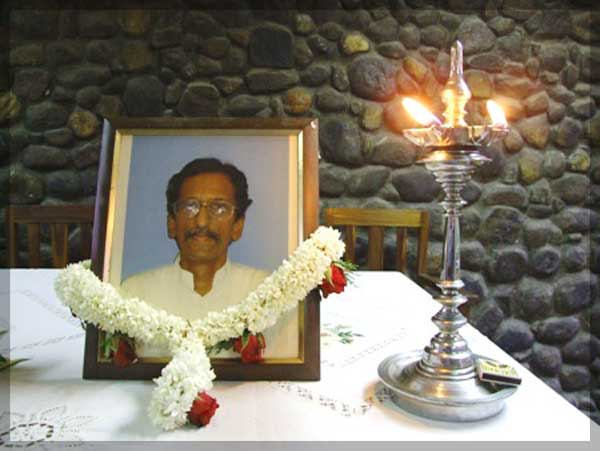Reply To:
Name - Reply Comment
Last Updated : 2024-04-20 08:36:00
 By D.B.S.JEYARAJ
By D.B.S.JEYARAJ.jpg) Chelliah and Thilakavathy Loganathan had six children. Ketheesh had three elder sisters and two elder brothers .Ketheesh was married to Bhavani Kumarasamy.
Chelliah and Thilakavathy Loganathan had six children. Ketheesh had three elder sisters and two elder brothers .Ketheesh was married to Bhavani Kumarasamy.
_DM-9_04.jpg) This was a difficult decision for Ketheesh and he did consult some friends before taking it. Many including myself thought it was a grave misjudgment on his part. The Peace Secretariat at that time was becoming a propaganda tool.
This was a difficult decision for Ketheesh and he did consult some friends before taking it. Many including myself thought it was a grave misjudgment on his part. The Peace Secretariat at that time was becoming a propaganda tool._DM-9_04-p.jpg) “Ketheeswaran never forgot that he had been a militant. He stayed on in the EPRLF and left it only in 1994 after differences with an individual who too later left. His background enabled him to easily make the transition to activism in civil society. He was constant in his concern that other militants too should be given the means and opportunity to come out into civil and political life. He pushed for the Norwegian initiated peace process to address this cause for all militants including those from the LTTE. But after the Karuna split the Norwegians pinned the label ‘paramilitary’ on all non-LTTE groups and this effort came to a standstill”.
“Ketheeswaran never forgot that he had been a militant. He stayed on in the EPRLF and left it only in 1994 after differences with an individual who too later left. His background enabled him to easily make the transition to activism in civil society. He was constant in his concern that other militants too should be given the means and opportunity to come out into civil and political life. He pushed for the Norwegian initiated peace process to address this cause for all militants including those from the LTTE. But after the Karuna split the Norwegians pinned the label ‘paramilitary’ on all non-LTTE groups and this effort came to a standstill”.
Add comment
Comments will be edited (grammar, spelling and slang) and authorized at the discretion of Daily Mirror online. The website also has the right not to publish selected comments.
Reply To:
Name - Reply Comment
On March 26, a couple arriving from Thailand was arrested with 88 live animal
According to villagers from Naula-Moragolla out of 105 families 80 can afford
Is the situation in Sri Lanka so grim that locals harbour hope that they coul
A recent post on social media revealed that three purple-faced langurs near t